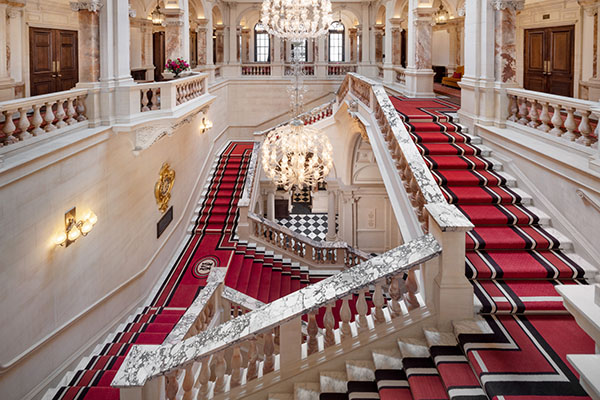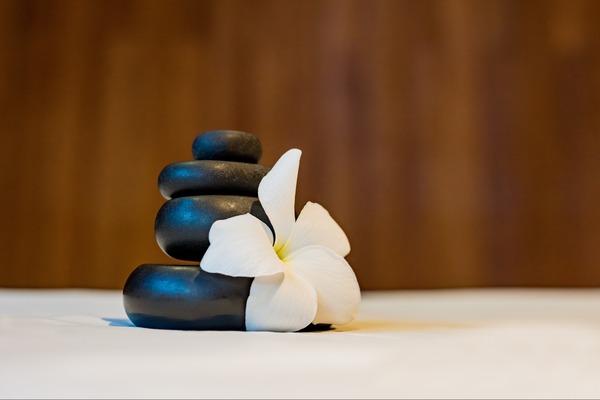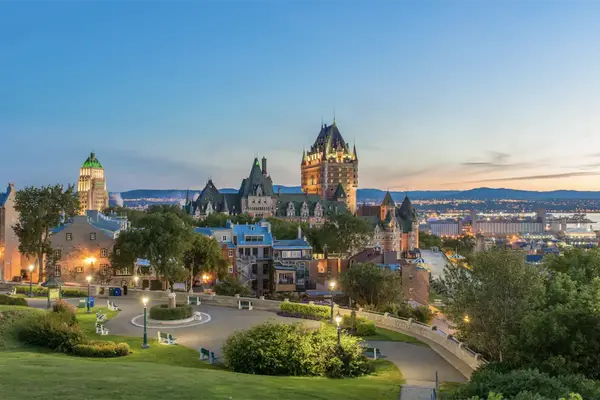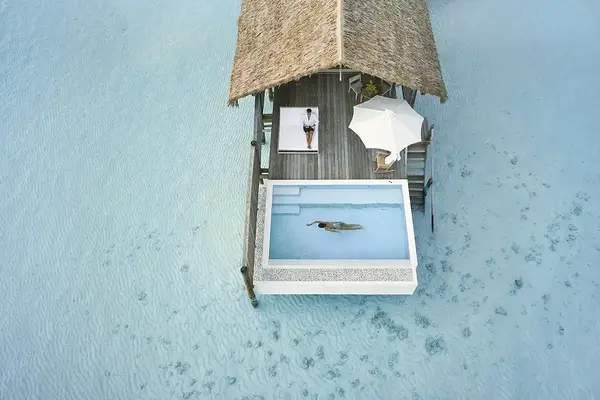'London’s most incredible new hotel for decades': Checking in to Raffles London at the OWO
TTG Luxury’s editor and publisher April Hutchinson discovers how the iconic Old War Office has been transformed into this spectacular hotel.
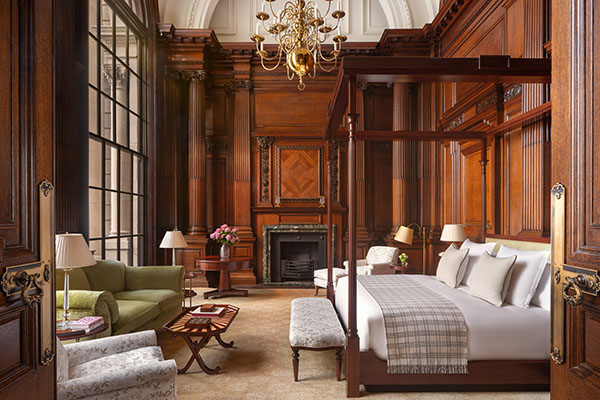
It’s not often I share stories of me sitting on a hotel toilet: but stick with me. There was music playing when I was in there, and I liked it. I knew the tune, but couldn’t place it.
As I washed my hands – it came to me, as did the reason it was playing. It was the opening refrain of John Barry’s You Only Live Twice, a classic James Bond song and perfectly apt, given that Ian Fleming’s time working in this very building for Britain’s Naval Intelligence Division during the Second World War was his inspiration for super-spy 007.
Playing Bond-themed music is just one of myriad ways in which London’s most incredible new hotel for decades has paid homage to its multi-faceted history as the War Office.
It was built for the British Army during the Edwardian “summer” – the period between the start of the 20th century and the outbreak of the First World War – and is based on the site of the original Palace of Whitehall, home to monarchs such as Henry VIII. When the War Office opened in 1906, there were 1,100 rooms housing up to 2,300 officials, and the building would bear witness to events of huge historic importance. It was at the centre of many intelligence activities, playing a key role in the evolution of the Military Intelligence Service into its modern form (MI5 and MI6).
The £1.4 billion project to convert one of London’s most significant buildings into a 120-room hotel, 85 super-luxury apartments and five independently-run restaurants has been driven by Britain’s wealthiest man, Gopichand Hinduja. He got the Grade II* building for £350 million in 2016, and the ambitious vision for the Old War Office, or The OWO as it is now known, began.

With all that history in mind, and the impeccable service of the Raffes team at every turn, spending 24 hours here felt like a real honour. I chatted with managing director Philippe Leboeuf in his office, which is just behind the lobby so he can be on hand to interact with guests.
I held meetings in The Drawing Room, with its comfy seating, fireplaces and extensive (and expensive) range of teas. I enjoyed a healthy breakfast in Saison, the beautiful all-day dining restaurant which was once the building’s military library and has now been given a pretty overhaul, with delicate fretwork walls, murals and airy glass ceiling.
I had a delicious five-course tasting menu in Mauro Colagreco at Raffles London at The OWO (the Argentinian chef also oversees private dining experience Mauro’s Table – for up to 23 guests – as well as Saison), followed by drinks in The Spy Bar.
This “top secret” hideaway is in one of the building’s underground corridors and is hidden behind a nondescript door. Somewhere nearby was the first meeting of the Secret Service Bureau. For those who manage to find the bar – where a major feature is a wall-mounted Aston Martin DB5 – assignations and plot hatching can easily be held in dim light over cocktails.
A bar that’s slightly easier to find is The Guards Bar on the ground floor, which had a nice after-work/pre-dinner buzz when I popped in. I also had time for one of the best facials I have ever had, at The Guerlain Spa, one of the largest luxury hotel spas in London, under the magical hands of therapist Cassie. The four floors of wellness include a spectacular 20-metre pool, nine stunning treatment suites, an extensive gym and L’Atelier Guerlain for hair and make-up.
The Nearne Suite I’d been taken to by my butler the previous day offered captivating views from three curvaceous bay windows. I could have sat and looked through the coffee-table books, or discovered more about secret agent sisters Jacqueline and Eileen Nearne who the suite was named for (all eight corner suites are inspired by notable women and female spies).
But lunch was awaiting me in Paper Moon, an Italian restaurant – one of those first independently-run places to open. There are two main entrances to the hotel – the one that takes you to the courtyard and these restaurants, and the Whitehall one, which packs the most punch as your gaze hits the grand, immaculately restored staircase.
The hotel was designed by the late Thierry Despont, who died earlier in 2023, but had said of his work: “Our objective was to preserve and enhance the DNA of the Old War Office building while creating a 21st-century luxury palace hotel.” I think he would have been very pleased with the result.
Good to know
- The Old War Office has appeared as MI6’s base in Bond films such as Octopussy, A View to a Kill, Licence to Kill, Skyfall and Spectre.
- There are five Heritage Suites – including the pretty Asian-inspired Raffes Suite, originally the Ministry of War conference room and now named after Sir Stamford Raffes.
- The Whitehall Wing can be created as a six-bedroom residence occupying the west wing, making it one of the largest hotel wings in London.
- With guests ranging from prime minister Rishi Sunak to Bollywood star Akshay Kumar; and HRH The Princess Royal to Italian tenor Andrea Bocelli, the hotel’s opening party was quite an affair.
- The Whitehall Ballroom – where the TTG Luxury Travel Awards will be held on 1 March 2024 – is part of a massive three-level excavation, and can seat around 600 people.

